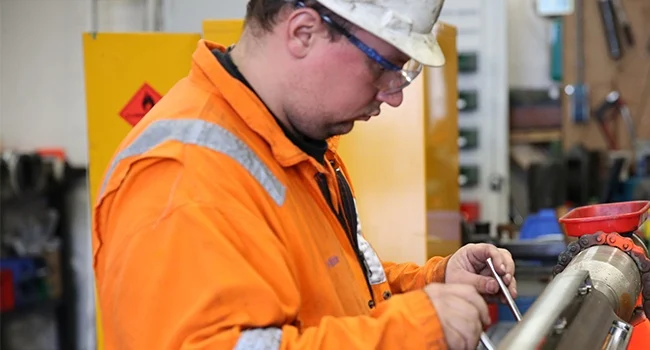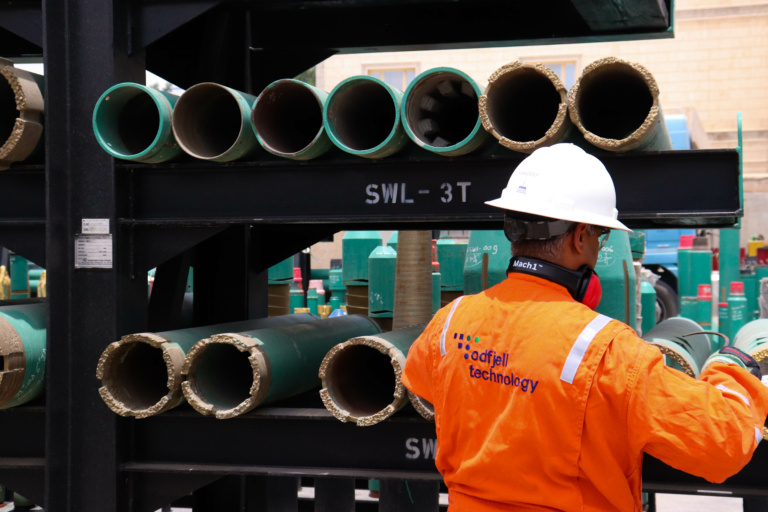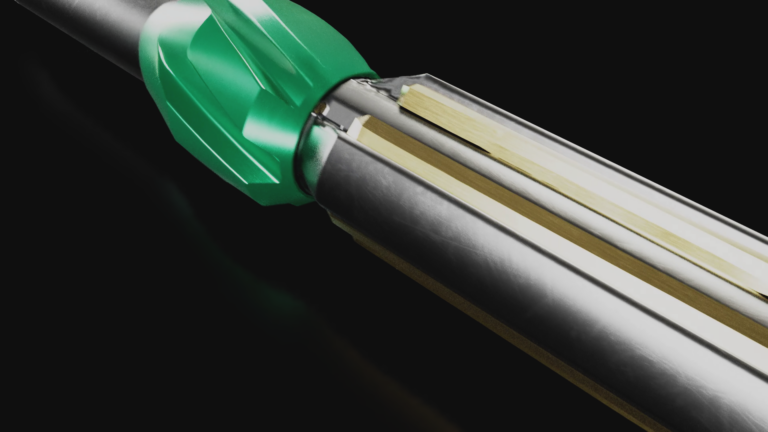Is equipment inspection & maintenance on the drilling rig profitable?
Most clients send their equipment on shore to get it inspected and maintained. Is this because of old habits, the nature of the business, or are there situations where it is beneficial to send certified inspectors to the rig?
Is the drill pipe ok?
Any responsible drilling operator would immediately remove damaged or worn-out equipment from production, of course. But the subtle wear and tear that are impossible to detect for the eye must be taken care of as well.
The different inspection standards establish a regime to periodically inspect the equipment to ensure these faults are detected. The OWS equipment is inspected according to NS 2, and this standard specifies inspection every 6th month.
> Read also: Understanding the inspection process of drillinng tubulars
Inspection offshore
Some drill pipe repair can be done on-site:
- Grinding threads
Double shouldered connections or severe damage requires a shop reface. - Simple file work on the threads
Some inspection methods may also be carried out on-site, like visual and dimensional inspection, internal condition of the pipe and hard banding. A full inspection of the drill pipe, however, needs to be carried out in a work shop.
Nature of the business
So for drill pipe, only parts of the inspection and maintenance process can be done on-site. The large quantity of pipe involved also restricts the outcome of an inspection process at the rig.
As for tubular handling equipment and TRS-related equipment, the relatively short span of use and the higher rental costs makes the client want to return the equipment as soon as the work is done. Thus supporting a system where periodical inspection is done on shore before sending the equipment out on a new assignment.
> Read also: Should we own or should we rent drilling equipment
The perfect conditions
Is there ever a situation where you would benefit from having certified inspectors coming to the rig to inspect and maintain the equipment? Well, in my opinion, on certain conditions there is.
First, this applies to company owned rigs that are permanently equipped with handling equipment they own themselves.
Second, the equipment in question is typically cross-overs, various subs, lift protectors and all pup-joints.
Benefits gained
These rigs may see severe cost reduction by inspecting and maintaining this equipment on the rig.
- Save transport costs – both from and to the rig
- Reduce logistic challenges
- Dismounting
- Packing
- Logging
- Sending
- Packing out, logging, storing when the equipment returns to the rig
- Reduce risk of damaging equipment during transport
- Save time
- Reduce risk of NPT caused by equipment being underway to or from inspection
Whether you have experienced other situations where offshore inspection was profitable, or your answer to the question in the title is “never!”, I’d like to hear from you in the comments section.
Topics: Down Hole

By: Øyvind Østensen
Øyvind has 12 years experience as Downhole Equipment Inspector. He is now Tool and Logistic Team Lead – Rental Norway.



